 Coomleagh East Stone Row is about 15km north-east of Bantry. On the north side of the Mealagh river, near the head of the valley.
Coomleagh East Stone Row is about 15km north-east of Bantry. On the north side of the Mealagh river, near the head of the valley.
South is in a dip. Not at the bottom but in a smaller dip within it [Pic].
North is in the dip between the two highest hilltops [Pic].
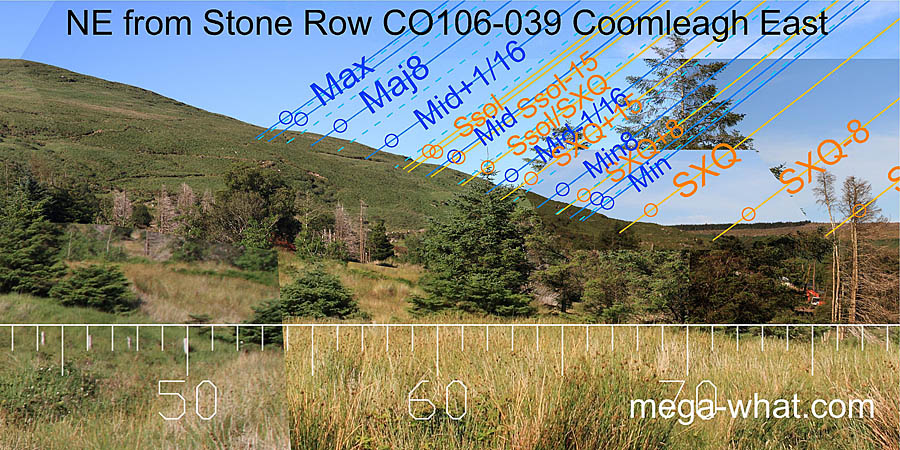
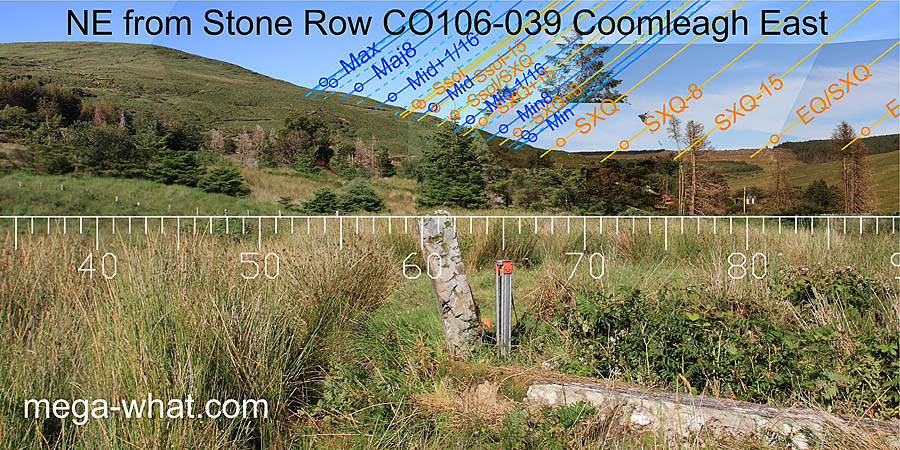 To the north-east, summer cross-quarters are at the foot of the slope with lunar major standstillLunistice positions vary cyclically over an 18.6 year period but are fairly static for more than a year at either end of the range
at a significant break.
The solstice is at a smaller break and the row axis would seem to have been about halfway between solstice and cross-quarters.
To the north-east, summer cross-quarters are at the foot of the slope with lunar major standstillLunistice positions vary cyclically over an 18.6 year period but are fairly static for more than a year at either end of the range
at a significant break.
The solstice is at a smaller break and the row axis would seem to have been about halfway between solstice and cross-quarters.

 The eastern dip has summer cross-quarter to one side and cross-quarter / equinox midpoint on the other.
The hilltop is a half-month north of winter cross-quarter which itself is at the basal intersect step.
Rising lunisticesLunistices are the most northerly and southerly moons of the month. The lunar equivalent of solstices - more.
span the next hilltop which has winter solstice on its top.
The eastern dip has summer cross-quarter to one side and cross-quarter / equinox midpoint on the other.
The hilltop is a half-month north of winter cross-quarter which itself is at the basal intersect step.
Rising lunisticesLunistices are the most northerly and southerly moons of the month. The lunar equivalent of solstices - more.
span the next hilltop which has winter solstice on its top.
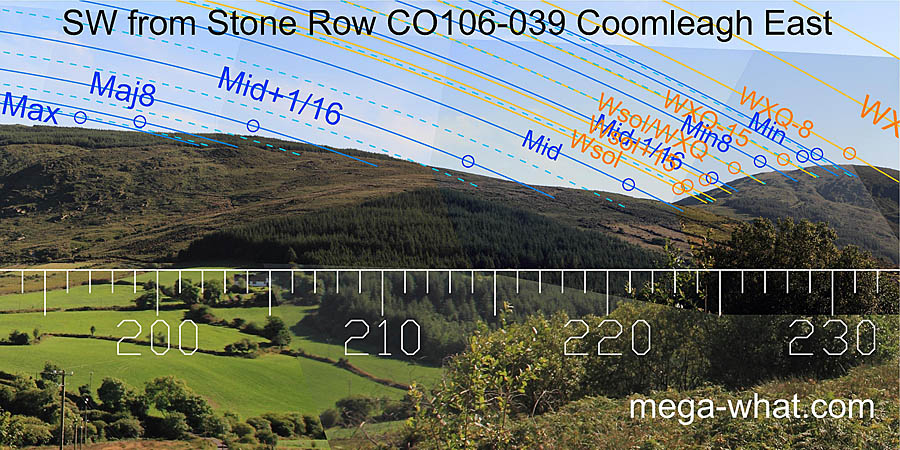
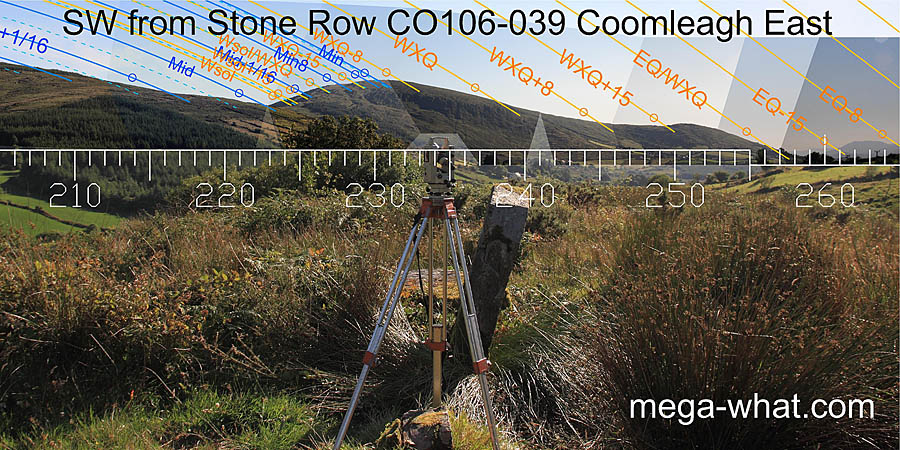 The south-western lunisticeLunistices are the most northerly and southerly moons of the month. The lunar equivalent of solstices - more.
zone spans a dip that has lunar midpoint at its bottom though it might have been winter solstice if the ridge was still forested at construction time.
The south-western lunisticeLunistices are the most northerly and southerly moons of the month. The lunar equivalent of solstices - more.
zone spans a dip that has lunar midpoint at its bottom though it might have been winter solstice if the ridge was still forested at construction time.
The small north-eastern stone roughly indicates the direction of lunar minor standstillLunistice positions vary cyclically over an 18.6 year period but are fairly static for more than a year at either end of the range. The tall south-western stone is now fallen but the overall row axis would appear to have been slightly north of winter cross-quarter.
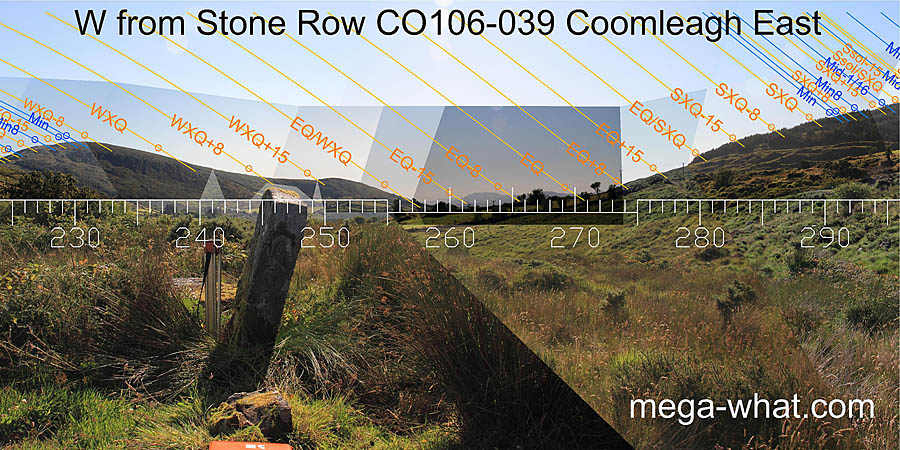
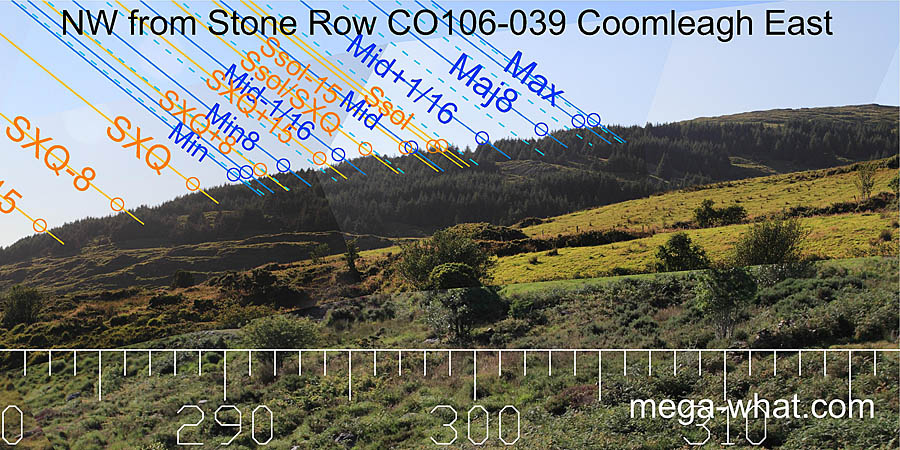 The western dip has the equinox to one side and winter cross-quarter / equinox midpoint on the other but detail of the north-western profile is obscured.
The western dip has the equinox to one side and winter cross-quarter / equinox midpoint on the other but detail of the north-western profile is obscured.
- Cullenagh Stone Row is over the ridge 3.7km east (112°)
- Ardrah Stone Row is down the vally 4.9km west (279°)
References
- Archaeological Survey of Ireland, record details. www.archaeology.ie/archaeological-survey-ireland
- POWER, D. et al. 1992 Archaeological Inventory of County Cork, Volume 1: West Cork. Dublin: Stationary Office. p35, no.144.
- Ó'NUALLÁIN, SEÁN 1988 Stone Rows in the South of Ireland. Proceedings of the Royal Irish Academy 88c:179-256, p235, no.39.
- MYLER, David 1998 An Archaeological Survey of the Mealagh Valley. Mealagh Valley Community Development Assoc. p74, no.49.
- RUGGLES, C.L.N. 1999 Astronomy in Prehistoric Britain and Ireland. Newhaven & London: Yale University Press. CKR71.
